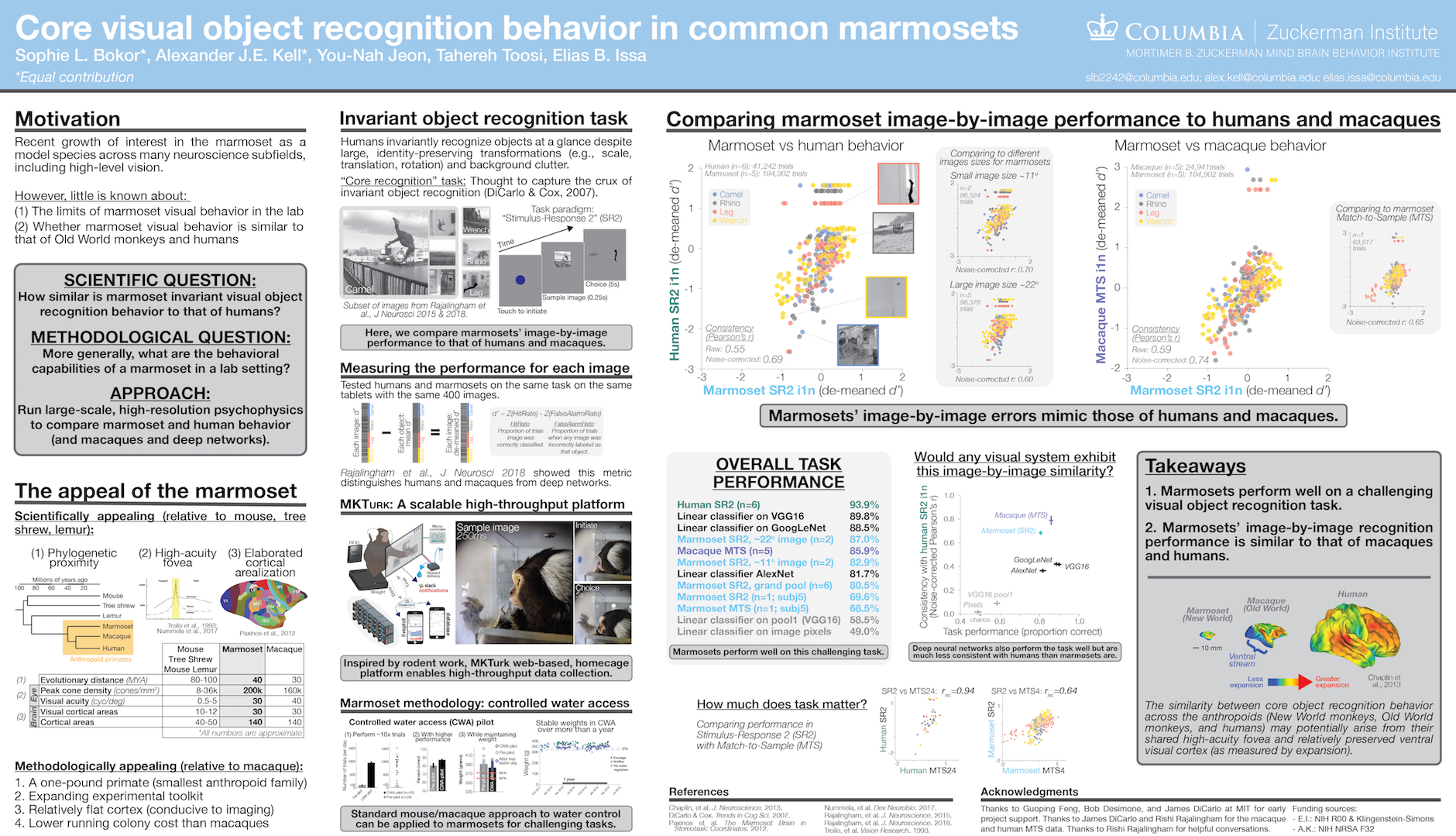Society for Neuroscience (SfN) Abstract 49, #488.13, October 22, 2019, Chicago, IL
Humans and macaques can recognize visual objects in natural scenes at a glance, despite identity-preserving transformations in the view, size, and position of an object. This ability, known as core visual object recognition, reflects a remarkable computational feat that only recently was accomplished at human levels by computer vision systems such as artificial neural networks. Here, we quantify the core object recognition abilities of the common marmoset, among the smallest of the anthropoid primates (monkeys, apes, and humans). Critically, as an anthropoid primate, the marmoset is endowed with a high-acuity fovea at its visual input and an elaborated set of ~150 cortical areas, unlike other small mammalian models such as rodents and tree shrews. It remains unclear, however, whether this small monkey performs invariant object recognition at levels comparable to and with similar behavioral signatures (e.g., image-by-image performance patterns) as larger monkey models in neuroscience such as macaques. To test marmoset visual behavior, we adopted a variant of an operant-conditioned object recognition task previously used in macaques and developed a novel homecage system for high-throughput behavioral testing in marmosets. We computationally benchmarked our task on a commonly used deep neural network (Alexnet) to assess the difficulty of the visual discrimination component in a visual system without downstream noise or behavioral lapse. The two-object visual discrimination proved computationally challenging: early layers of Alexnet perform near chance levels (50%) whereas higher layers achieve ~80% performance. Our preliminary findings demonstrate that marmosets: (1) complete 500-1500 trials per day (in a 3-hour period); (2) reach performance levels of ~90% on the relatively simple task of pose-tolerant object recognition on blank, gray backgrounds, suggesting low behavioral lapse rates; (3) reach performance levels of >80% on the visually difficult core object recognition task on complex natural backgrounds that was benchmarked on Alexnet; (4) exhibit behavioral signatures (image-by-image performance) that are highly correlated with those of macaques. Taken together, these findings suggest that marmosets and macaques may exhibit similar visual behavior, complementing known similarities at the level of the eye and brain across anthropoid primates. Thus, marmosets may be a valuable, small animal model for neuroscientific studies of high-level visual object recognition.

